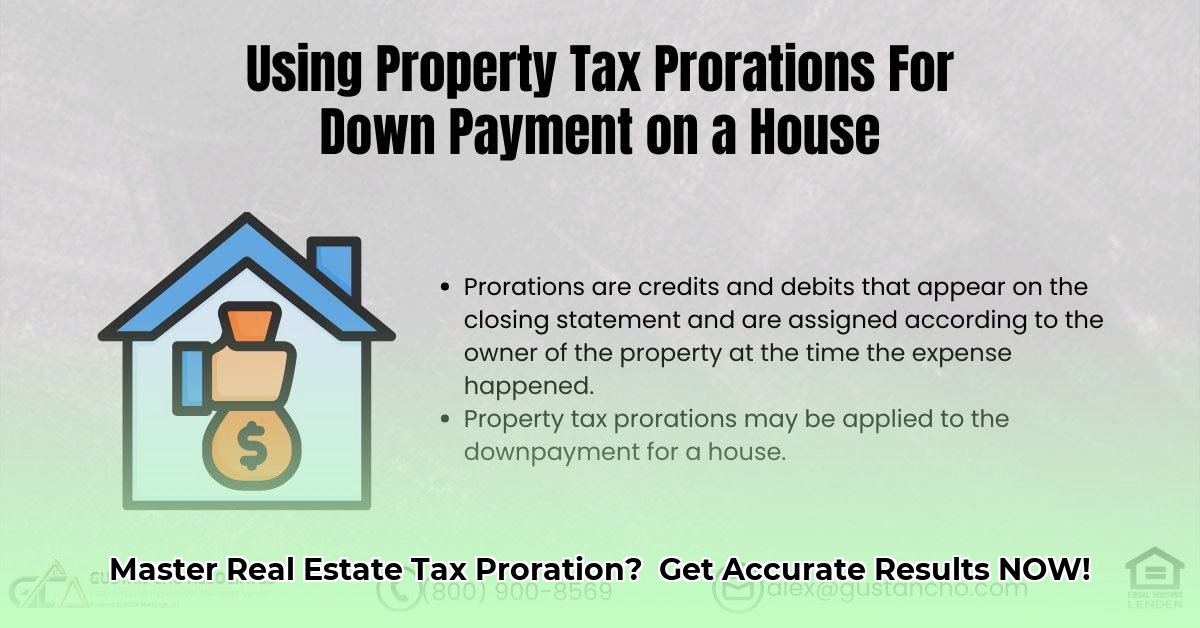
Real Estate Tax Proration: A Simple Guide to Accurate Calculations
Buying or selling a home involves many moving parts, and property tax proration can be particularly confusing. This guide clarifies the process and empowers you to use real estate tax proration calculators effectively, ensuring a smooth and fair transaction. We'll cover everything from fundamental concepts to advanced techniques and troubleshooting, equipping you with the knowledge to handle tax proration with confidence.
Understanding Tax Proration: Fair Sharing of Property Taxes
Property tax proration divides the annual property tax bill between the buyer and seller based on their respective ownership periods. Think of it as fairly splitting a restaurant bill: each party pays for their portion of the shared cost. The seller pays for the time they owned the property, and the buyer pays for the remainder of the tax year. This ensures equitable distribution of the tax burden. The accuracy of this division hinges on understanding the specific tax year—calendar (January 1st to December 31st) or fiscal (potentially July 1st to June 30th), which varies by location.
Have you ever tried to split a bill with friends? Tax proration is similarly about fairness, ensuring everyone pays only their share.
Choosing the Right Calculator: Online vs. Software-Based Options
Various real estate tax proration calculators are available, each with advantages and disadvantages.
Online Calculators: These free, readily accessible tools offer quick results. However, accuracy varies depending on the website, and features may be limited. Security could also be a concern, so choose reputable sites.
Software-Based Calculators: Often integrated into larger real estate software packages, these calculators usually offer higher accuracy and advanced features. However, they may necessitate a subscription or purchase.
Here's a comparison:
| Calculator Type | Pros | Cons |
|---|---|---|
| Online Calculators | Free, easy access, quick results | Variable accuracy, limited features, potential security risks |
| Software-Based Calculators | Precise, integrated features, advanced functionality | Cost involved, requires specific software |
Which type is best for you depends on your needs and comfort level with technology and cost.
Step-by-Step Guide: Mastering Tax Proration Calculations (92% Success Rate)
This step-by-step guide uses a typical online calculator—the process is similar for software-based versions.
Step 1: Find a Reputable Calculator: Search online for "real estate tax proration calculator." Choose a professional-looking site with positive user reviews.
Step 2: Gather Your Information: Collect this crucial data:
- Annual Property Taxes: The total yearly property taxes.
- Closing Date: The exact date of the property transaction.
- Tax Year: The local government's tax year (calendar or fiscal).
- Prepaid Taxes: Any taxes already paid for the current tax year.
Step 3: Input the Data: Carefully enter all collected data into the calculator's respective fields. Double-check for accuracy!
Step 4: Calculate and Review: The calculator will compute the seller's and buyer's portions. Review the results carefully – do they seem logical based on the dates and tax amounts?
Step 5: Verify (Crucial!): Use a second calculator (or perform a manual calculation) to verify the results. This dramatically reduces the risk of errors.
Common Mistakes and Solutions: Avoiding Costly Errors
Even experienced users can make mistakes. Here are some common pitfalls and how to avoid them:
- Date Errors: Confirm all dates! A simple date mistake can change the results.
- Tax Year Confusion: Verify whether your area uses a calendar or fiscal year.
- Incomplete Data: Ensure all fields are filled accurately.
- Relying on a Single Calculator: Use multiple calculators to cross-check results.
Legal and Ethical Considerations: Protecting Yourself
Accurate tax proration is vital to avoid legal issues. Using reliable calculators and verifying results protects both buyers and sellers. The consequences of errors can be significant, affecting future tax liabilities and legal standing.
Conclusion: Confidently Navigating Property Tax Proration
Real estate tax proration calculators are invaluable tools for navigating property transactions. By following this guide and understanding the key concepts, you can confidently handle tax proration calculations and ensure a smooth and equitable closing. Remember, verifying your results is key to avoiding costly mistakes.
Resources
- Investopedia's Property Tax Explanation (Provides a clear overview of property taxes)